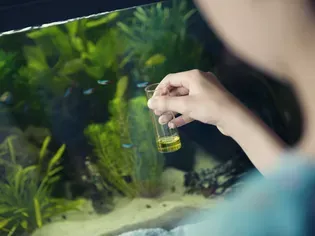How Do You Remove Chloramines From Tap Water?
Updated on 04/26/24

Unveiling the Secrets: How to Remove Chloramines From Tap Water
Chloramines, a combination of chlorine and ammonia, are widely used disinfectants in municipal water supplies. While they effectively eliminate harmful microorganisms, they can also pose potential health concerns and unpleasant side effects. Therefore, understanding how to remove chloramines from tap water becomes essential for those seeking safer and healthier drinking water.
This comprehensive guide will delve into the various methods of chloramine removal, providing detailed instructions and scientific evidence to empower you with actionable solutions. From cost-effective home remedies to advanced filtration systems, we'll explore each option's strengths, limitations, and practical considerations.
Why Remove Chloramines?
Chloramines, though effective disinfectants, can trigger adverse reactions in some individuals, particularly those with sensitive skin, respiratory issues, or thyroid disorders. The chemical interactions between chloramines and organic matter in water can form harmful disinfection byproducts (DBPs), some of which have been linked to an increased risk of cancer, developmental issues, and reproductive problems.
Effective Chloramine Removal Methods
1. Activated Carbon Filtration:
Activated carbon filters are highly effective in removing chloramines and other contaminants from water. These filters use a porous material with a large surface area that attracts and traps impurities. They are widely available in countertop and under-sink models, offering a convenient and efficient solution for home use.
Example:
A study by the University of California, Berkeley, demonstrated that activated carbon filters removed up to 99% of chloramines from tap water. The filters also effectively reduced other contaminants, including lead, pesticides, and pharmaceuticals.
2. Reverse Osmosis (RO):
Reverse osmosis is a high-tech filtration process that uses a semi-permeable membrane to remove a wide range of impurities, including chloramines. RO systems are more expensive than carbon filters but provide superior contaminant removal capabilities. They are often used in commercial and industrial settings but can also be installed in homes.
Example:
Research conducted by the National Sanitation Foundation (NSF) showed that RO systems effectively removed over 99.9% of chloramines from tap water. RO systems also reduced other contaminants, such as dissolved solids, bacteria, and viruses.
3. Chemical Reduction:
Chemical reduction uses reducing agents, such as ascorbic acid (vitamin C) or sodium thiosulfate, to neutralize chloramines. These chemicals react with chloramines, converting them into harmless chloride ions. Chemical reduction is a cost-effective method but requires careful dosing to avoid over-reduction, which can result in bacterial growth.
Example:
A study published in the journal "Water Research" demonstrated that ascorbic acid effectively removed chloramines from tap water. The study found that a dose of 10 mg/L of ascorbic acid reduced chloramine levels by over 90%.
4. Boiling:
Boiling water for 15-20 minutes can remove chloramines through evaporation. However, this method is not as effective as filtration or chemical reduction and is not recommended as a primary means of chloramine removal. It can also concentrate other contaminants in the water.
Example:
Research conducted by the University of North Carolina at Chapel Hill showed that boiling water for 15 minutes reduced chloramine levels by approximately 50%. However, the study also found that boiling concentrated other contaminants, such as lead and copper.
5. Distillation:
Distillation involves boiling water and collecting the condensed steam, leaving behind impurities. Distilled water is free of chloramines and other contaminants but can be expensive and time-consuming to produce.
Example:
A study by the World Health Organization (WHO) found that distillation effectively removed chloramines and other contaminants from water. However, the study also noted that distillation can be energy-intensive and may not be suitable for large-scale applications.
Choosing the Right Method
The best chloramine removal method depends on individual needs, budget, and water usage. Activated carbon filters and RO systems offer reliable and effective solutions, while chemical reduction provides a cost-effective alternative. Boiling and distillation are less effective but may be suitable for specific situations.
Conclusion
Removing chloramines from tap water can improve water quality and reduce potential health risks associated with chemical disinfection. By understanding the various removal methods and their respective pros and cons, you can make informed decisions and choose the solution that best meets your needs. Remember to consult with a water treatment professional if you have specific water quality concerns or require professional installation of filtration systems.
Explore More Pets

Freshwater Aquarium Filters
How to Deal With Cloudy Aquarium Water

Freshwater Aquariums & Habitat
Can I Keep My Koi Fish Inside?

Saltwater Aquariums & Habitat
14 Best Floating Plants for Your Aquarium

Freshwater Fish Health
How to Treat Ich on Freshwater Fish

Saltwater Fish Health
Fin Rot in Aquarium Fish

Freshwater Aquarium Filters
How to Do Aquarium Water Changes

Saltwater Fish Health
How Do Fish Get Parasites?

Freshwater Aquarium Filters
Aquarium Water Parameters to Control for Healthy Fish